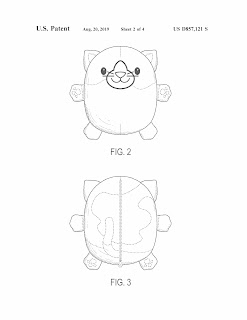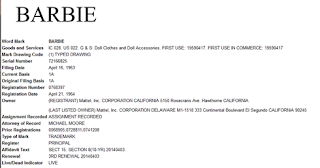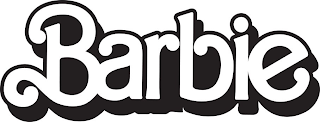There are a few major misconceptions and fallacies regarding various types of intellectual property I encounter somewhat regularly. In this post, I'll address the most common and explain why they're problematic. Hopefully, this post will help others avoid similar pitfalls.
If I've missed anything, let me know in a comment!
Patents can be issued not only for new inventions, but also for improvements to those that already exist. However, improvements must still meet the three most basic requirements for patentability: new, useful, and non-obvious (for more, see the LibGuide Patent Basics tab on Patentability). That leads to the first myth/misconception:
Make Two (2) Changes
"If you make two (2) changes to something that exists, then it's a patentable improvement." Don't fall prey to this thought. In fact, never think it again, because it is misleading in many ways. The three most basic requirements above are what you need to use. Two changes to an extant invention could be two very obvious changes; for example, if I make something purple and twice as large, that's hardly novel. Furthermore, a single change can be sufficient improvement to qualify for patentability. What counts as non-obvious or new can be little murky, and it's impossible to specifically define and still apply to all inventions. Using any kind of concrete quantification like the above will only cause problems.
The process of applying and filing for IP protection can be both arduous and expensive. While assistance is available via multiple sources (not explored here), it sometimes does not seem worth it to purse official government registration. People go to extraordinary lengths to try to beat the system, while avoiding high costs and lengthy procedures. Many people might attempt this:
Mail it to Yourself (Patents)
I've met more than one person who has referred to this "Poor Man's Patent". Take proof of the invention and your signature, seal it in a envelope addressed to yourself, date stamp those sealed edges and mail it so you have official government proof of the date. It's a cool idea... If patents were possible to obtain without any sort of widespread, official public disclosure, or, y'know, granted to the first to invent rather than first to file. Since the Leahy-Smith America Invents Act of 2011, the USPTO gives precedence to inventors who file for an invention first, not show proof they were the first with the idea. So unless you really need some kind of semi-official evidence that you had an idea before a date (and I don't know of any related to obtaining patents), this is a waste of time, energy, and postage.
Mail it to Yourself (Copyright)
Do the same thing as above, except instead of proof of invention or idea, enclose a recording or hard copy of your creative work. In fact, this is (somehow) even less useful. I learned local musicians used this method to try and secure copyrights on the cheap. In the US, copyright is automatically applied to any creative work as soon as it is "fixed", or recorded in some physical or digital format. This blog? Covered by copyright laws. Photos on your phone? Subject to copyright. Poem you wrote on a grade school assignment? Technically copyrighted. Unfortunately, any sort of realistic legal protection or enforcement of those copyrights is almost impossible if the work isn't registered with the US Copyright Office. Also unfortunately, the musicians didn't know they had a cut-rate copyright before wasting time, postage, recording media, and shipping material, and the effort earned them no extra protection.
Unlike patents and copyrights, a mark registered with the USPTO can be infinitely renewed, remaining a protected registered mark, so long as it is in use. Also unlike copyrights and patents, any mark that is considered "dead"--abandoned, cancelled, filed but not registered--does not become public domain. Confusion about what it means when a mark is dead leads some people to the next erroneous conclusion:
A Dead Mark is Free to Use
As in the first example, reality is much more complicated. It is possible a commercial entity could choose to let a mark "die" yet still continue to use it to represent their good or service. Perhaps the cost of maintenance was too great a burden, who knows. If the owner makes a point to remove the registered symbol, they can keep using a mark with common law protection provided by the TM or SM symbol. For another entity to start using that mark woudld be infringement. And that's just one potential scenario. Trying to register a mark that already exists might cause rejection on the basis of likelihood of confusion, or objections from prior owners, among others. To use an extant mark, the rights to it must be purchased from the owner or through re-registration via the USPTO. The only time a mark might be considered to have entered public domain is if it has suffered from "genericide".
Not everyone has a fully-formed plan when they choose to pursue a patent. Sometimes, inventors or investors view obtaining a patent as the end goal. However, a patent should be one part of a larger business plan, or an inventor/owner may find they've wasted time, money, and effort. One of the fallacies that leads to people simply wanting a patent without knowing why:
Patents Earn Money
A patent can lead to an income, but just having one does not guarantee any. In fact, some (many) patents will never generate a cent. Inventors and owners can make money by marketing the invention, licensing the technology, or selling the rights to the patent. Even then, there is no assurance that a significant amount will result. Patents are an exclusionary property right, and nothing more. They grant owners the right "to exclude others from making, using, offering for sale, or selling" the invention in the US or importing it into the US (according to the USPTO). In the end, it might be more valuable to not pursue a patent if one doesn't fit into a strong business strategy.
Those five misconceptions pop up frequently in my IP Basics class and during individual consultations. Some, like the dead marks and patent mailing strategy, make more sense to me than others. I suspect they mostly stem from with misinformation spread between people and online. Again, leave a comment if you think I missed something important.















